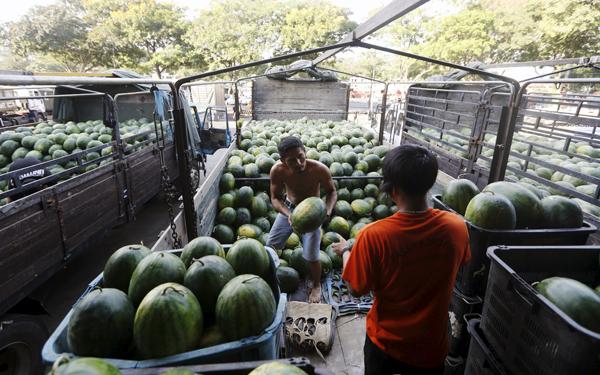You are here
World food prices jump to six-year high — UN
By AFP - Dec 04,2020 - Last updated at Dec 04,2020
ROME — Global food commodity prices rose sharply in November to their highest level in nearly six years, the UN food agency said on Thursday, due in part to adverse weather conditions.
The Food and Agriculture Organisation (FAO) said prices of the most globally traded foodstuffs were up across the board, putting extra pressure in particular on 45 countries that need outside help feeding their populations.
The FAO Food Price Index averaged 105 points during the month, up 3.9 per cent from October and 6.5 per cent from a year earlier.
"The monthly increase was the sharpest since July 2012, putting the index at its highest level since December 2014," the Rome-based agency said.
The biggest rise was in the vegetable oil price index, which jumped 14.5 per cent because of low palm oil stocks.
The cereal price index rose 2.5 per cent from October — making it nearly 20 per cent higher than a year ago.
Wheat export prices were also up, because of reduced harvest prospects in Argentina, as were maize prices, with lower output expectations in the US and Ukraine and large purchases by China, the FAO said.
The sugar price index was up 3.3 per cent month-on-month amid "growing expectations of a global production shortfall" as bad weather sparked weaker crop prospects in the EU, Russia and Thailand.
Dairy prices also rose 0.9 per cent to near an 18-month high, in part because of a boom in sales in Europe. Meat prices were up 0.9 per cent from October, but significantly down on a year ago, the report said.
The increase in prices is an extra burden for those who saw their income fall as a result of the coronavirus pandemic, which the FAO said is proving to be "an important driver of the levels of global food insecurity".
"The pandemic is exacerbating and intensifying already fragile conditions caused by conflicts, pests and weather shocks, including recent hurricanes in central America and floods in Africa," it said.
"Forty-five countries, 34 of them in Africa, continue to be in need of external assistance for food," it said.
What is more, it noted a risk of above-average rainfall in southern Africa and east Asia, while parts of near east Asia and east Africa were expecting reduced rains, "conditions that may result in adverse production shocks".
Related Articles
PARIS — World food prices fell in 2023, with considerable declines for grains and oils as supply concerns eased, the UN's Food and Agricultu
ROME — Global food prices plunged 19 per cent in 2015 following a fresh decline in December on the back of plentiful supplies and a slowing
The number of hungry people in the world has fallen sharply over the past decade but 805 million, or one in nine of the global population, still do not have enough to eat, three UN food and agriculture agencies said on Tuesday.
















